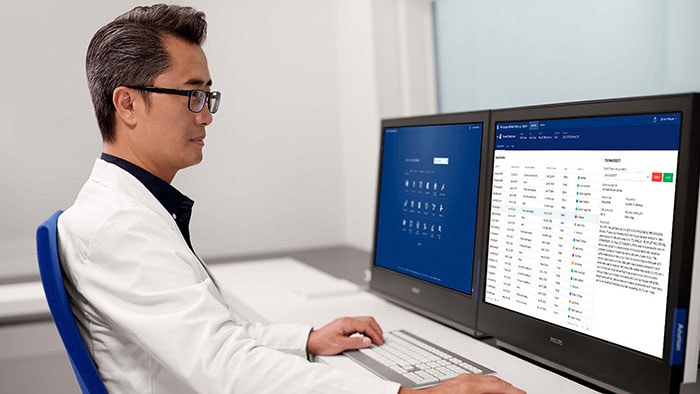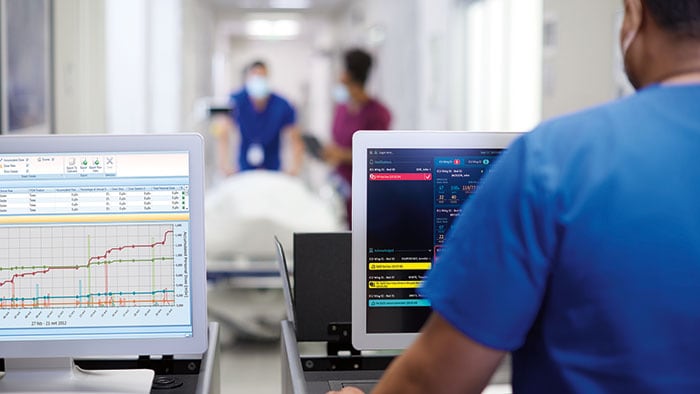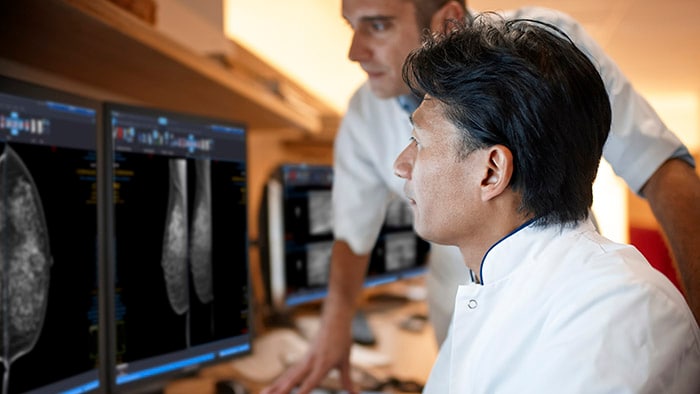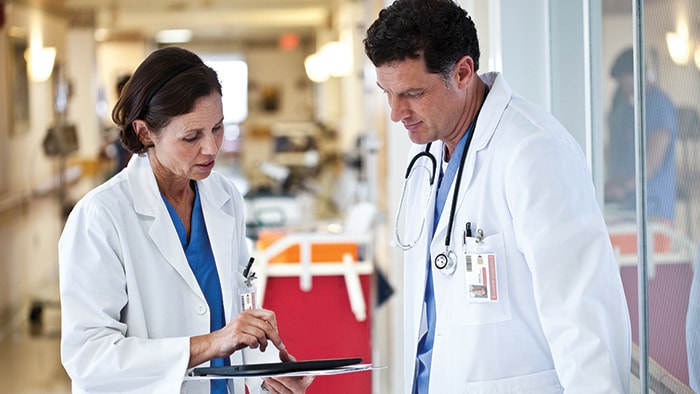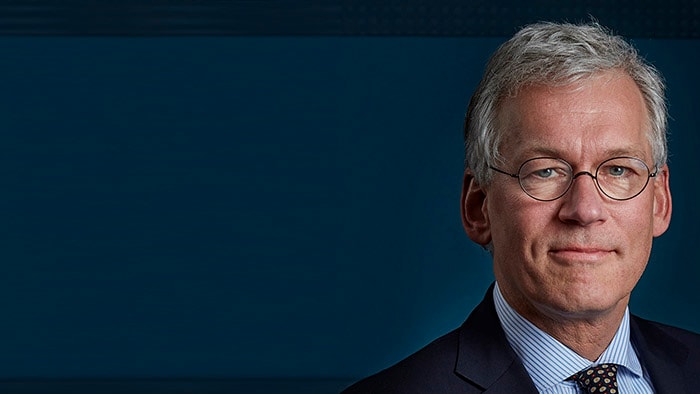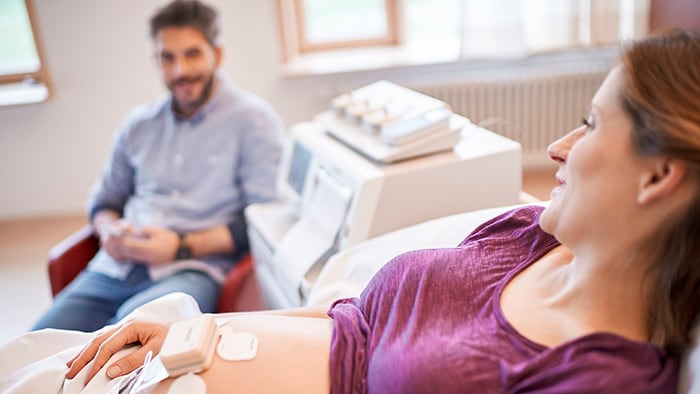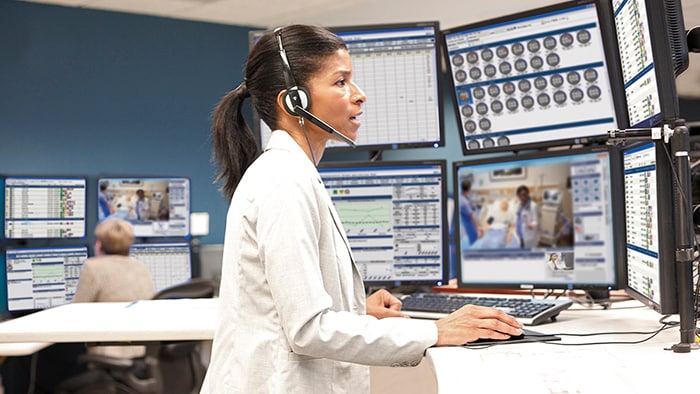COVID-19 has created a human tragedy on a huge scale, with deep consequences As our thoughts move towards recovering from COVID-19, we must create a more resilient system that that ensures the health and safety of all people. We must make sure that we are stronger in the face of the challenges to come. And we must do so without delay. The only way to do this is by re-imagining our relationship with the natural world. We need to entwine social, environmental and economic progress, and decouple economic growth from unsustainable consumption, while driving concrete and collective actions that speed up the adoption of the circular economy and realize systematic change.
for the global economy that will lead to an extended recession and long-term hardship.
This foreshadows the greater challenge we face in the years to come as the climate crisis escalates. Already, droughts, tornadoes and floods are threatening the lives and livelihoods of far too many people around the world, yet we are not doing nearly enough to deal with it.
Understanding the problem: the take, make, waste system
If we are to build a more resilient system, we must first understand what makes us so vulnerable. Our current linear economic model – in which economic growth is dependent on the endless extraction and use, or misuse, of natural resources – is pushing our planet to the brink.
Over 100 billion tons of resources flow into the economy each year, with the majority eventually lost as waste or emissions, causing lasting damage to the environment and leaving us vulnerable to the ever-worsening effects of the climate crisis.
Any disruption to this flow of resources into the economy also leaves us exposed to huge economic shocks, as has been made all too clear by COVID-19. Global shifts in the labour market, transport and consumer demand have led to wildly fluctuating commodity prices and widespread economic hardship. With demand for resources expected to double by 2050, our exposure to both environmental and economic challenges will continue to grow. With demand for resources expected to double
by 2050, our exposure to both environmental and economic challenges will continue to grow.
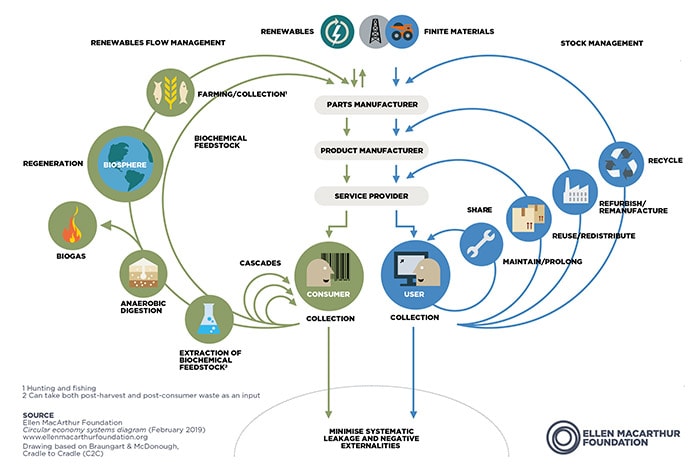
A visualization of the circular economy in action Image: Ellen MacArthur Foundation
A vision for a more resilient world: a circular economy
We need a clear vision for an alternative future. A world in which we can breathe clean air; a world without the climate threats of droughts and floods. A world where resources are plentiful, with enough for all of us to earn a good livelihood. Our vision for the future is ambitious, but it is possible: a circular economy.
A circular economy is focused on designing out waste and pollution, keeping products and materials in use, and regenerating natural systems, so that we do not exhaust the resources of our planet. Changing the way we make and use products can contribute to addressing 45% of global greenhouse gas emissions, making a critical contribution to mitigating the impending climate crisis. Reducing our reliance on scarce resources increases our economic resilience, and building a circular economy offers a $4.5 trillion economic opportunity by avoiding waste, making businesses more efficient, and creating new employment opportunities. By creating a circular economy we can create a stronger system and flatten or even reverse some of the trends that now threaten the existence of future generations.
There is a huge task ahead of us, but it can be done. The Platform for Accelerating the Circular Economy recommends four areas to focus on:
1. Focus recovery stimulus on green and circular investment
As economic stimulus packages are introduced to support recovery from COVID-19, such as the €750 billion ($843 billion) proposed by the EU, there is a huge opportunity to deepen our commitment and promote a circular economy as part of a green recovery. The priorities will be investing in renewable energy, protecting biodiversity and transforming agriculture, and funds should also be used to directly encourage circularity – for instance by investing or providing loan guarantees to circular economy start-ups that are driving solutions.
2. Create a policy framework for a circular economy
Governments play an important role in creating this vision. We need to see an ambitious and broad range of policies introduced to shift our relationship with natural resources and incentivize a move towards a circular economy. There should be subsidies for the re-use of materials, and taxes on waste. Recycling should be enforced, with an associated investment in the recycling infrastructure needed to make this possible. Carbon pricing is crucial. Procurement should take into account the ‘total cost of ownership’. Single-use plastic should be banned outright. The European Green Deal includes many of these elements, with a Circular Economy Action Plan sitting at its heart. The broader adoption of these policies would go a long way towards nudging the behaviour change we need to see. An ever growing number of global businesses have made a clear call for the introduction of policies for a green recovery to support their own pledges to embed the SDGs in their ways of working, via initiatives such as the UN Global Compact and the Dutch Sustainable Growth Coalition.
3. Pioneer the adoption of circular business models
Many companies are already shifting away from one-off transactions towards ongoing relationships with their customers. Sharing platforms are on the rise. Some companies are starting to take products back at the end of their economic life – this has the dual benefits of keeping scarce materials in use for as long as possible, while also reducing reliance on availability of raw materials and thus creating a business model that is more resilient against shocks.
The immediate crisis caused by COVID-19 is certainly putting pressure on many companies, but it is crucial that business leaders maintain their commitments to sustainability and circularity during any short-term impact. Long-term thinking is key, but actions make all the difference. When governments introduce measures like carbon pricing and border adjustment tariffs as included in the European Green Deal, the companies that are innovating and adjusting their business models will find themselves at a clear business advantage – as well as contributing to the better world we so desperately need.
4. Innovate to stimulate circularity
There are many opportunities for encouraging innovation to change our relationship with our ecosystem, by using new technologies that enable more circular business models. COVID-19 has seen a sudden and dramatic shift towards home working, remote healthcare, and digital virus-tracking, and we can take these lessons forward into the recovery. We need to encourage the use of new, competitive technologies to reduce energy consumption, to harvest and re-use materials, scale the availability of green energy sources, expand lifecycles of products, and reduce waste. The technology breakthroughs are within reach; we just need to invest in and adopt them.
As we move towards recovery from COVID-19, we must embrace the future, and not postpone the inevitable by hanging on to the past. We must reject waste and adopt circularity. By leveraging all the knowledge, power and influence we have to push forward on these priorities we can build a circular economy. It will take deep collaboration between business, government and civil society, but the rewards will be well worth it; a stronger ecosystem that will be resilient for the decades to come, and a world where people and nature can live together in harmony. Will you join us in going circular?
It’s indisputable that the efforts of caring for our earth and caring for our communities go hand in hand. As part of our mission, we have an ambitious goal to improve the lives of 2.5 billion people a year by 2030, while acting responsibly towards our planet at every step. Click here to learn more about how Philips is working towards a stronger, more accessible, and truly sustainable healthcare system in the U.S., and globally.
This article was created by Philips and the Institute for Future Initiatives at the University of Tokyo, and was first published on the World Economic Forum blog.
The authors are co-chairs of the Platform for Accelerating the Circular Economy.

Share on social media
Topics
Author
Naoko Ishii
Professor, Institute for Future Initiatives, University of Tokyo

Frans van Houten
CEO Royal Philips, April 1, 2011 – October 14, 2022
Follow me on
